Case Studies.
Add Case Study
Our Case Study database tracks 22,657 case studies in the global enterprise technology ecosystem.
Filters allow you to explore case studies quickly and efficiently.
Download Excel
Filters
-
(6,653)
- (2,601)
- (2,127)
- (945)
- View all
-
(5,642)
- (2,469)
- (1,692)
- (826)
- View all
-
(5,571)
- (2,178)
- (1,766)
- (643)
- View all
-
(5,247)
- (2,179)
- (1,715)
- (1,321)
- View all
-
(2,881)
- (1,448)
- (574)
- (376)
- View all
- View all 15 Technologies
- (1,985)
- (1,985)
- (1,915)
- (1,679)
- (1,629)
- View all 42 Industries
- (8,728)
- (4,742)
- (3,618)
- (3,233)
- (2,947)
- View all 13 Functional Areas
- (3,304)
- (2,787)
- (2,603)
- (2,006)
- (1,630)
- View all 129 Use Cases
- (13,581)
- (5,296)
- (4,272)
- (3,520)
- (2,856)
- View all 9 Services
- (504)
- (432)
- (416)
- (382)
- (301)
- View all 1083 Suppliers
Selected Filters
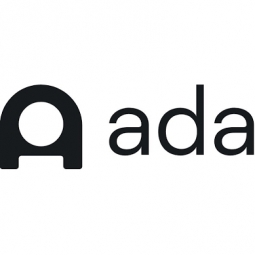
|
Indigo's Data-Driven Approach to Enhance Customer Delivery Experiences
Indigo, a Canadian retail company, faced a significant challenge in mid-2019 when it diversified its delivery network from a single nationwide carrier to an array of both national and regional options. This expansion from one to eight carriers meant that delivery data would now arrive from eight different sources, requiring substantial resources to track. Simultaneously, Indigo aimed to improve the customer experience surrounding order delivery, as research indicated that more than two-thirds of shoppers won't return to a retailer after a bad delivery experience. When they used only a single delivery carrier, Indigo received ‘after the fact’ reporting letting them know a package was delivered, but no indication when a package was stalled or delayed along the way. As Indigo expanded its network of parcel delivery carriers, it became increasingly challenging to get a timely, centralized view of delivery performance and issues across the country at any time, and difficult to establish procedures to proactively address them before a customer called to report an issue.
|
|
|

|
Jeitto Crédito's 500% Increase in Automated Queries with Aivo's AI Solution
Jeitto Crédito, a financial services company, was facing a significant challenge in managing the high volume of customer queries. The company was spending an increasing amount of time and resources on human support to handle these queries. Their goal was to reduce this demand by retaining 70% of the service demand through a bot. They aimed to implement a bot with Conversational Artificial Intelligence to optimize time and costs, channeling most of the frequent queries through the virtual assistant, thus freeing human agents for more complex cases.
|
|
|

|
Teclab's Transformation: Enhancing Student Experience with AI
Teclab, a Higher Technical Institute in Argentina, was facing a significant challenge in bridging the gap between the current education system and the professional world's needs. The institute, known for its innovative approach to education, was struggling to provide a 360°, innovative customer service while improving the student experience and communication. The traditional structures of education were proving to be inflexible and unable to adapt to the changing needs of students and society. The institute was looking for a solution that could offer immediate responses to student inquiries, adapt to their preferred communication channels, and evolve according to societal requirements.
|
|
|
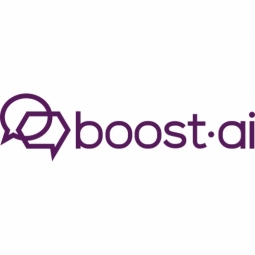
|
Advania's Successful Implementation of Conversational AI in Iceland
Advania, a leading Nordic IT services firm, identified a unique opportunity in Iceland's high customer service expectations due to the country's high internet usage. With 98% of Icelandic households being online, the demand for efficient online interaction with companies and government institutions was high. However, the high salary costs in Iceland posed a challenge for companies to quickly scale up and down their customer service as needed. Furthermore, despite the country's inclination towards online communication, chatbots and conversational AI were relatively unheard of due to skepticism about AI's ability to handle the complex Icelandic language. This necessitated Advania to partner with a conversational AI vendor whose Natural Language Processing (NLP) took a language-agnostic approach.
|
|
|

|
Asker kommune Enhances Employee Support with Conversational AI
Asker kommune, a Norwegian municipality with over 6,500 public sector employees, was in search of a digital solution to facilitate the transition after merging with the Hurum and Røyken districts in 2020. The municipality needed a central repository of information that was both easy to access and use for its employees. The challenge was to provide a platform that could answer a wide range of questions related to the merger and other work-related topics, and to do so in a manner that was clear, consistent, and easily understandable by the employees. The solution also needed to be able to make better use of existing information sources within the municipality and provide a common framework of answers to be shared between municipalities.
|
|
|
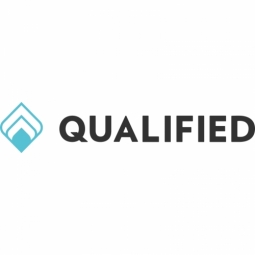
|
Alation's Success with Qualified's Pipeline Cloud: A Case Study
Alation, a leader in data intelligence solutions, faced a significant challenge in pipeline generation. Their website, a critical channel for pipeline generation, was attracting a growing number of new visitors each month due to a thoughtful SEO strategy. However, Alation wanted to provide an intuitive user experience and navigation to its visitors and become less reliant on forms. They needed a way to meet visitors at the precise moment when they were seeking more information and accurately identify and route qualified buyers to their dedicated account owners for a real-time conversation. Alation’s global sales development representative (SDR) team, divided into U.S., EMEA, and APAC markets, lacked visibility into website traffic and couldn't determine which regions website visitors were located in, how they were making their way to the website, and to whom they should be routed. This lack of extensive lead-routing capabilities meant that the SDR team couldn’t immediately engage visitors in a conversation, leading to missed potential pipeline opportunities.
|
|
|

|
Transitioning to a Retained Recruiting Model: A Case Study of IDEX Consulting and Bullhorn
IDEX Consulting, a recruitment and business growth consultancy, was looking to transition from a contingent recruiting model to a more innovative version of the retained recruiting model. The company believed that a retained model would allow them to provide a more tailored service to their clients by connecting them with a shorter list of nurtured, high-quality candidates. However, they faced resistance from clients who were accustomed to the traditional payment model where recruiters are paid only after a job is filled. Additionally, IDEX Consulting needed to convince their own consultants about the benefits of the retained model. They needed data to prove that the new model could save their consultants time, increase billings, and have a positive impact on their clients’ businesses.
|
|
|
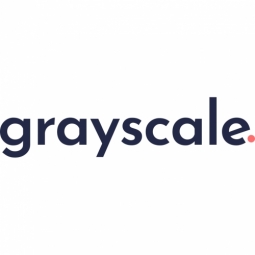
|
Amazon Pharmacy's Automated Candidate Communication System: A Case Study
Amazon Pharmacy was faced with the challenge of managing an incredibly high volume hiring process while maintaining their company value of being customer and candidate obsessed. The workload quickly became unmanageable for their recruiters, and they began looking for ways to create an automated candidate communication system. They needed a system that could handle upwards of 1000 candidates per recruiter, provide scalability and a unique personal touch, increase their response rate with candidates, and keep more applicants in their pipeline longer. The traditional methods of communication, such as phone calls and emails, were slow, outdated, and impersonal, leading to poor response rates and a lack of clear instructions for the applicants.
|
|
|
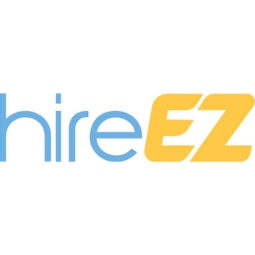
|
Transforming Talent Acquisition with hireEZ: A Case Study on FI Consulting
FI Consulting, a firm known for its robust and complex portfolios, was facing a significant challenge in sourcing the right talent for their various roles. The firm required candidates who were not only technically proficient and analytical but also client-centric in their approach. The challenge was further amplified when a candidate for a critical role rescinded their offer just two days before their start date. This left the talent team in a difficult position, having to restart the sourcing process. The firm was also struggling to fill a role for a proposal writer, a position that had remained vacant for four months. The traditional sourcing methods were proving to be time-consuming and inefficient, often failing to deliver the depth and quality of candidates required by the firm.
|
|
|

|
Time-Saving Sourcing and Expanded Talent Pools for First Entertainment Credit Union
First Entertainment Credit Union, a leading financial resource for members of the entertainment community, was facing a significant challenge in sourcing talent for specific niches. The credit union, which manages over $1.5 billion in assets and serves over 83,000 members, was struggling to find candidates with experience in specific technologies used by small banks and credit unions. The job market was tight, especially for technical or senior-level roles, and the Talent Acquisition Partner, Matthew Vandegrift, was the only professional handling these tasks. He was looking for a solution that would help him find more qualified candidates without having to spend a lot of time sourcing. The challenge was to find a software that could widen the net and help him find more qualified candidates.
|
|
|
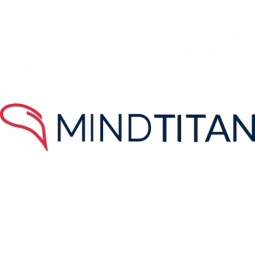
|
AI-Driven Recommendation Engine Boosts Engagement for Fuzu
Fuzu, a Helsinki-based company, provides job opportunities, career advice, and new skills to young East African professionals. The company faced a challenge in streamlining its user onboarding experience and boosting engagement through personalized recommendations. The onboarding process was cumbersome due to the need to obtain considerable amounts of information from new users. Additionally, Fuzu wanted to leverage the data from pre-written resumes, cover letters, and diplomas available in the form of text documents to facilitate the onboarding process. The company also aimed to keep users engaged with personalized offers and recommendations. However, the question was how to leverage the data and system to provide additional benefits to the customers.
|
|
|
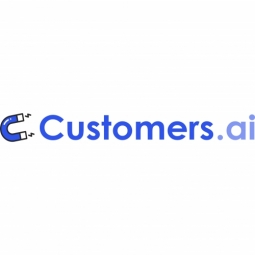
|
Car Loans Canada: Enhancing Loan Application Process with Chatbot-Powered Ads
Car Loans Canada, a leading online automotive financing company, was facing the challenge of generating high-quality loan applicants in a cost-efficient manner. The company was seeking an effective ad objective that would not only raise brand awareness but also reduce the cost to acquire leads. The traditional method of acquiring leads through website forms was not yielding the desired results, with conversion rates hovering between 5-8%. The company was also grappling with a high cost per applicant (CPA) of $45 on average. The challenge was to find a solution that would streamline the application process, increase conversion rates, and reduce the CPA.
|
|
|

|
Lincoln Davies Building Supply: Reducing Support Costs and Boosting Sales with AI Chatbot
Lincoln Davies Building Supply, a family-owned business for over 145 years, was facing the challenge of offloading customer support for their small brick-and-mortar business. The company, which has evolved into one of the finest building supply companies in Central New York, was looking for ways to incentivize customer loyalty. They wanted to make their website work harder for the business by helping customers and potential customers find the products they need faster and support sales goals. The company was also looking for a solution to reduce the time spent on answering frequently asked questions.
|
|
|

|
Scaling Leads and Reducing CPA by 97% with Facebook Ads and Chatbots: A Case Study on Customers.ai Inc
Customers.ai Inc, a chatbot marketing software platform, was facing a significant challenge in broadening its reach and decreasing the cost of lead acquisition. The company was using Facebook ads that directed users to their website, a strategy that was proving to be expensive and inefficient. The cost per click for these ads was between $3 to $5, and with a typical website traffic conversion rate of 2%, the cost per lead acquisition was a staggering $150 to $250 each. This high cost was a significant barrier to the company's goal of increasing awareness of its Facebook ad tools and bot marketing platform among potential new users.
|
|
|

|
Boosting Student Enrollment with Chatbot-Powered Ads: A Case Study on Summit Academy OIC
Summit Academy OIC, a tuition-free accredited vocational school in North Minneapolis, was seeking a cost-effective method to generate high-quality potential students and increase enrollments to its programs. The school had been running campaigns on various advertising channels including terrestrial radio, cable TV, digital TV, and Facebook Ads, with Facebook Ads being the most effective. However, these campaigns only led people to the website where only an average of 4% of visitors completed an application to attend an information session. The school wanted to increase this number and believed that more engaged and educated prospective students would be more likely to apply to info sessions and eventually enroll.
|
|
|
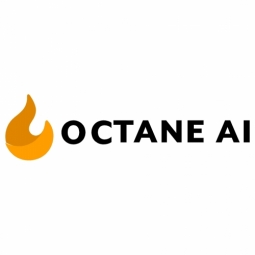
|
Automating Sales and Customer Support: A Case Study on Aviator Gear and MuteSix
Aviator Gear, a company that designs, manufactures, and supplies custom gear to military units, training classes, and aerospace defense companies, was looking for innovative ways to increase sales and improve customer support. They had tested out Messenger Marketing and saw some initial success with it. However, they wanted to drastically increase the use of this new and innovative marketing channel. The challenge was to engage with their users in previously unheard of ways and build their community of aviation fans. To achieve this, they partnered with MuteSix, a premier Shopify Plus agency that provides companies with a highly effective customer acquisition service.
|
|
|

|
Leveraging Octane AI for Enhanced Facebook Ads: A Case Study on MuteSix and Beekeeper's Naturals
Beekeeper's Naturals, a company dedicated to sharing the benefits of propolis with North America, was seeking innovative ways to engage with their users and convert them into paying customers. They had been working with MuteSix, a premier Facebook advertising agency, and Octane AI, but were looking for new ways to leverage these partnerships to improve their advertising performance. The challenge was to find a new and innovative advertising channel that could help them engage with new and past website visitors who didn't make a purchase, and convert them into paying customers.
|
|
|

|
Buckle Me Baby Coats: Reducing Returns and Exchanges by 95% with a Size Finder Quiz
Buckle Me Baby Coats, a company that designs children's coats for car seats, faced a significant challenge with high return and exchange rates. The company's founder, Dahlia Rizk, identified two main issues contributing to this problem. The first was the inconsistency in sizes across different coat lines, which confused customers and led to a high number of returns. The second issue was the lack of a tool to educate customers about the correct coat size to purchase, leading to frequent exchanges. The seasonality of the winter coats business also posed a challenge, as it created fluctuations in demand and return rates.
|
|
|
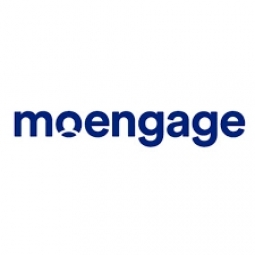
|
Freo's Personalized Customer Engagement and Higher Conversion Rates with Flows and Affinity Segments
Freo, a full-stack mobile neobank for millennial consumers in India, was facing significant challenges in driving higher engagement and conversion rates. The company was experiencing high abandonment rates among consumers during the Know Your Customer (KYC) process, a crucial step that cannot be skipped for fintech apps. Additionally, Freo was struggling with segmenting customers into different cohorts and determining the optimal time and channel for communication. Post-onboarding, the company faced difficulties in activating customers and identifying category buckets that customers would fall into, such as dormant, inactive, champions, and power users.
|
|
|
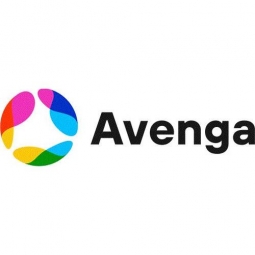
|
Intelligent Vehicle Counter
The Client is engaged in providing vehicle traffic counting for government services based on recorded video manual analysis.They considered applying an automation tool for vehicle detection and counting that would recognize a vehicle type according to certain categories among the general road traffic. This tool would optimize human efforts, eliminate errors, and speed up the workflow and consequently the results.
|
|
|

|
SessionM Streamlines Talent Acquisition with hireEZ's AI Technology
SessionM, a rapidly growing customer engagement platform, was facing significant challenges in their talent acquisition process. The company was hiring across multiple functions and locations, and their lean Talent Acquisition team was struggling to keep up with the demand. The team was spending an excessive amount of time sourcing candidates, reviewing countless LinkedIn profiles, and struggling to find the right candidates for their specific needs. The traditional methods of sourcing based on job titles were proving to be inefficient as titles often varied across different companies. The team was in dire need of a solution that could help them source faster and better candidates, and they began exploring AI sourcing solutions.
|
|
|

|
Modernizing Recruitment: AHRC Nassau's Journey to Cut Ghosting by 30%
AHRC Nassau, a chapter of The Arc New York, was struggling with outdated manual processes in its recruitment efforts. The organization, which supports over 2,200 people with intellectual and developmental disabilities throughout Nassau County, found it challenging to attract diverse candidates. AHRC Nassau operates a variety of facilities, including schools, health clinics, and a farm, and employs over 3,500 people, many of whom require specialized training. With more than 500 positions open at any given time, the organization's talent team was in dire need of a modern tech stack to meet the demand and streamline their recruitment process.
|
|
|

|
Revamping PetSmart's Career Site: A Case Study on Enhanced Candidate Engagement
PetSmart, the largest specialty pet retailer, was facing a challenge in connecting with its job candidates. The company wanted to understand its candidates better and communicate with them in a language they could relate to. The line between consumer and employer brands was blurring, and understanding both sides was becoming crucial for evaluating the employment brand. The Talent Acquisition (TA) team at PetSmart realized that they needed to evolve their communication methods with job seekers after talking to candidates and associates to understand how different people absorbed content.
|
|
|

|
Boosting Talent Engagement through Video: A Case Study on Rockwell Automation
Rockwell Automation, a global leader in industrial automation and digital transformation, faced a significant challenge when the COVID-19 pandemic forced its talent team to halt the production of highly produced videos. These videos were a crucial part of the company's strategy to tell its story and engage with its talent. The sudden inability to produce these videos posed a threat to the company's talent engagement efforts and required a swift and effective solution.
|
|
|
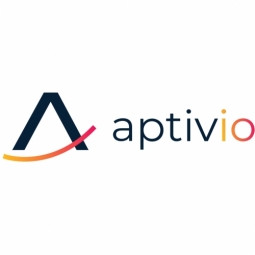
|
Aptivio's AI Solution Boosts Michelin's Entry into Medical Technology Industry
Michelin, a renowned tire manufacturer, ventured into the medical technology industry with a new product, AirProne, an air cushion for patients suffering from respiratory distress. However, the company faced significant challenges due to the maturity of the medical technology industry. The primary issues were improving lead generation efficiency, targeting the right marketing audience, and developing a comprehensive understanding of the market. The critical point in the lifecycle of any product is its market release and sales growth. Michelin needed a solution that could provide a clear path to success for market research, testing, release, and sales growth.
|
|
|
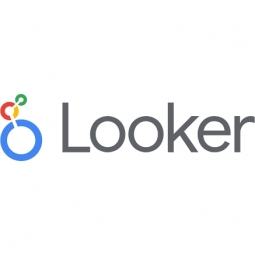
|
Autheos: Revolutionizing Video Marketing with AI and BigQuery
Autheos, an Amsterdam-based video marketing company, was faced with the challenge of developing a unique AI video marketing platform that could deliver individualized consumer acquisition solutions for global brands. The company's vision was to use artificial intelligence to solve the age-old problem of wasted advertising dollars by providing personalized, real-time internet marketing. However, to turn this vision into reality, Autheos needed a powerful data analytics solution to power algorithms designed to connect brands with individual consumers. The company also faced the challenge of proving the correlation between video and consumer behavior, which required massive data crunching to reach the proof-of-concept stage.
|
|
|

|
Backflip Studios Leverages Google Cloud Platform for Mobile Game Scaling
Backflip Studios, a mobile game development studio, faced a significant challenge in the rapidly evolving mobile games market. The company needed to launch games quickly and release frequent updates to keep players engaged. In 2009, most mobile games had minimal server infrastructure, but as games evolved to include frequent content updates, cross-device play, community events, player communication, and sophisticated data analysis, a robust server infrastructure became crucial. The unpredictability of user influx, especially when games were featured on an app store or review site, posed another challenge. Backflip Studios also needed to analyze the data collected from their games to understand player behavior and improve game features.
|
|
|

|
Banco ABC Brasil's Data Democratization and Governance Enhancement with Google Cloud
Banco ABC Brasil, a modern bank with over 33 years of operation, was facing challenges in managing and analyzing both financial data and customer behavior information. As the bank's operations increased, it became evident that the decision-making process needed to be improved and automated to support new service models and cater to diverse financial needs of customers. The bank aimed to develop a data-driven culture and leverage artificial intelligence and machine learning tools to gain a competitive edge. However, the existing on-premises data platform was not equipped to support these strategic goals. The bank needed a robust solution to modernize its data platform, enhance data governance, and facilitate the creation of a data-driven culture.
|
|
|

|
Bharat Light & Power: Enhancing Industrial Productivity and Asset Health with Google Cloud
Bharat Light & Power Pvt Ltd (BLP), a leading renewable energy generation and technology company in India, faced significant challenges in ensuring the availability of wind turbines that powered utility-scale wind power generation across the country. The failure of even the smallest component could shut down an entire wind turbine, compromising efficient operation. For instance, a $5,000 battery failure could shut down a $2.5 million piece of equipment. As the business expanded, it began to extend beyond its core 'AI for industry' mission. It recruited an IoT team to help factory owners and operators enable the programmable logic controllers (PLC) and supervisory control and data acquisition (SCADA) systems that run disparate equipment and machines to communicate with each other and provide usable data and insights. However, BLP's initial cloud service provider could not provide an architecture that made sense for an industry-focused solution.
|
|
|
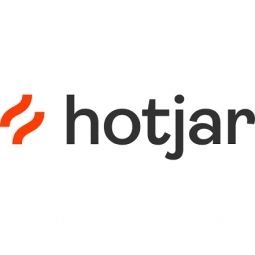
|
Tripling Conversions with IoT: A Case Study on NerdCow's Web Development Strategy
NerdCow, a premium web design agency, was faced with the challenge of improving conversions on a client's ecommerce site, The Transport Library. The Transport Library, a large online shop selling images of rail and bus photos, was struggling with low sales despite its extensive product database of over 140,000 items. The main issues identified were a complicated search bar, difficulty in finding new products, and users not completing their purchases. The search bar was particularly challenging for the site's user base, primarily aged 55 to 65+ and not tech-savvy, due to its multiple fields with filters and joining statements. Users were also spending hours scrolling through the site's product database without clicking into any actual products, indicating a struggle to find new items. Lastly, despite adding products to their carts, users were not finalizing their purchases.
|
|




